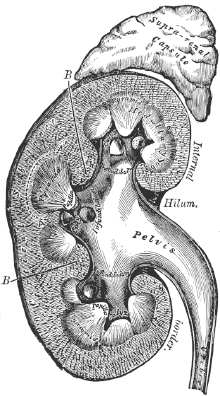URETEROSCOPY
LASER STONE SURGERY : URETEROSCOPY
Ureteroscopy is upper urinary tract endoscopy which facilitates examination of the upper urinary tract, by the passage of a small diameter endoscope through the urethra, bladder, and then directly into the ureter. The procedure is useful in the diagnosis and the treatment of disorders such as kidney stones or urothelial cancers in the ureter or kidney.
The examination may be performed with either a flexible or a rigid fiberoptic device while the patient is under a general anesthetic. This is a minimally invasive procedure that makes use of natural channels in the body. The patient is usually free to go home a few hours after the procedure.

ADDITIONAL INFORMATION
The success rate of ureteroscopy is over 90% for the majority of stones that are treated this way. Successful stone clearance depends on the size of stone, location of the stone, (where in the kidney or ureter), whether there is one or more stones present, how long the stone has been stuck, the anatomy of your urinary tract and the experience of the urologist treating you.
Patients notice blood in the urine with abdominal or back pain which settles quickly. There is a small risk of developing a urine infection. Failure to break and retrieve the stone may result in insertion of a JJ stent or an alternative procedure such as lithotripsy. In rare circumstances the ureter may be damaged, this may result in narrowing of the ureter (‘stricture’) or perforation: this is rare and may require stretching by a balloon and insertion of a JJ stent. In the extremely rare event where the ureter is avulsed from kidney, an open surgery to repair may be required.
Other treatment options include:
ESWL: this is suitable mostly for stones of a certain size in upper ureter and kidney. It can be used for stones in the lower ureter near the bladder; however, ureteroscopy tends to be the chosen modality by many urologists.
PCNL: this involves making a small incision in the back and passing a tube through the kidney to remove stones in the kidney and upper ureter. It is more invasive than ureteroscopy.
Laparoscopic or open surgery: This is as effective as ureteroscopy, but involves making several incisions and needs a longer hospital stay. There is a greater risk associated with this modality, therefore this modality is considered as a last resort.
Hospital admission is occasionally planned, but often is as an emergency as a result of the stone causing obstruction to the kidney. Ureteroscopy is performed under general anaesthetic. Patients are advised not to eat food for 6 hours and not to drink water 3 hours before the planned operation time.
Urine is tested by nurses to determine whether a urine infection is present. Antibiotics are administered at the time of the operation, but may be started a few days earlier if there is concern about bacterial infection.
Imaging in the form of X-ray, ultrasound or CT scan may be required just before the operation to confirm the exact anatomical position of the stone. You should expect to be in hospital for at least the day, but sometimes an overnight stay is required.
In some cases, a second or third procedure is required to complete the treatment so be aware that this is unlikely to be the only intervention.
Under a general anaesthetic, a telescope examination of the bladder is performed (‘cystoscopy’). A map of the urinary system is created by injecting contrast or dye in the urinary system. The telescope is passed up through the urethra, bladder, ureter and up to the kidney if necessary.
Once the stone is located, vaporisation is performed aided by Holmium laser. Stone fragments are removed using a basket and sent for biochemical analysis. At the end of the procedure, a ureteric JJ stent may be required as the ureter swells and can obstruct the flow of urine from the kidney to the bladder.
There is often blood in the urine, which is often transient. Symptoms from the JJ stent are common; however, it is impossible to predict who will develop such symptoms.
At some point after the procedure, either a plain X-ray or CT KUB may be requested. This is used to determine if the stone is still present or not.
If a JJ stent was inserted, it will need to be removed usually in outpatients with the aid of a flexible cystoscope under local anaesthetic. Occasionally, it is removed under general anaesthetic, especially if a contrast study is required to ensure you are stone free.
A visit to our stone clinic for a comprehensive stone screening will give you all the relevant information to help prevent further stone formation.
A Stone prevention guide can be downloaded here:

